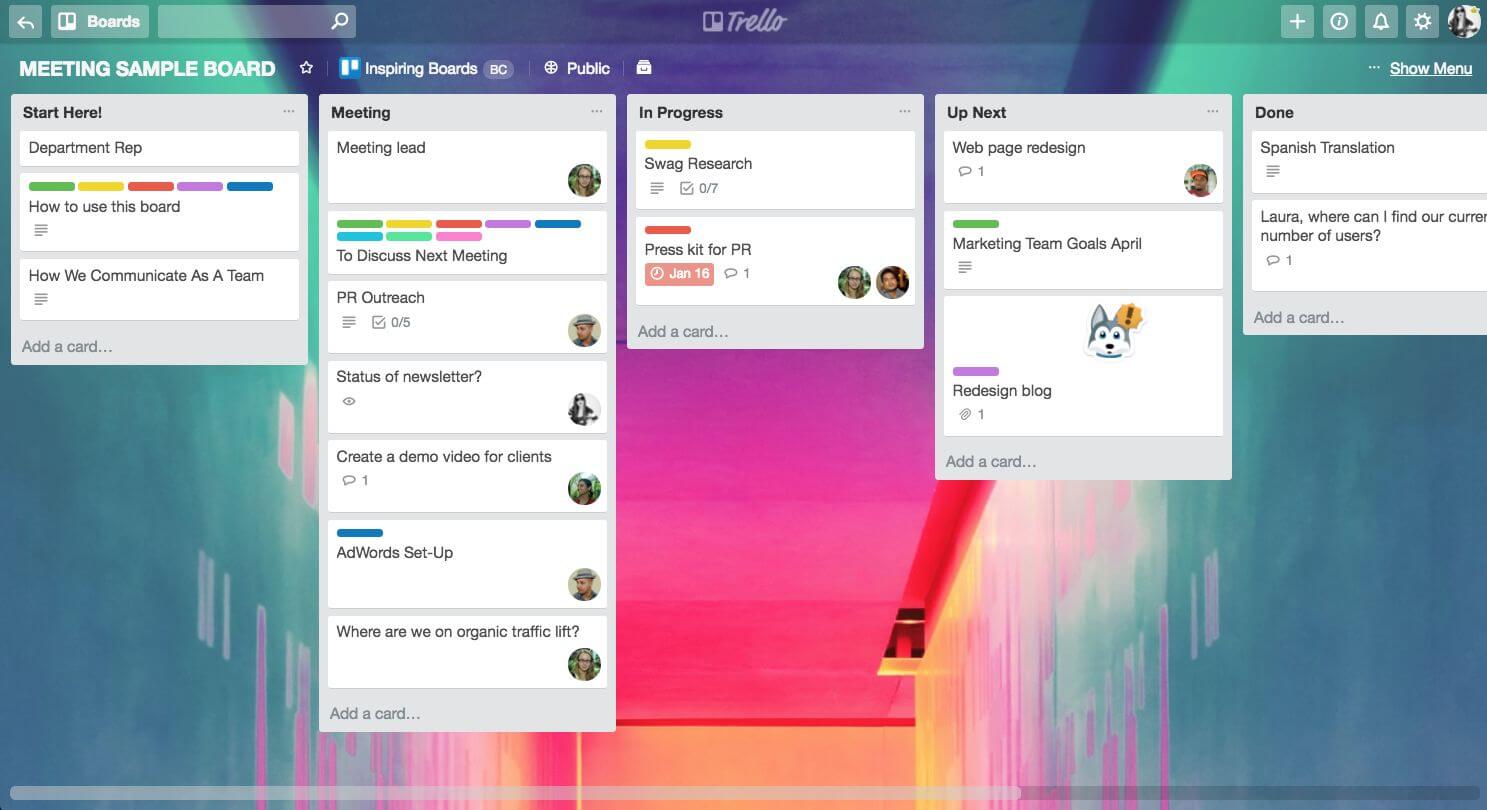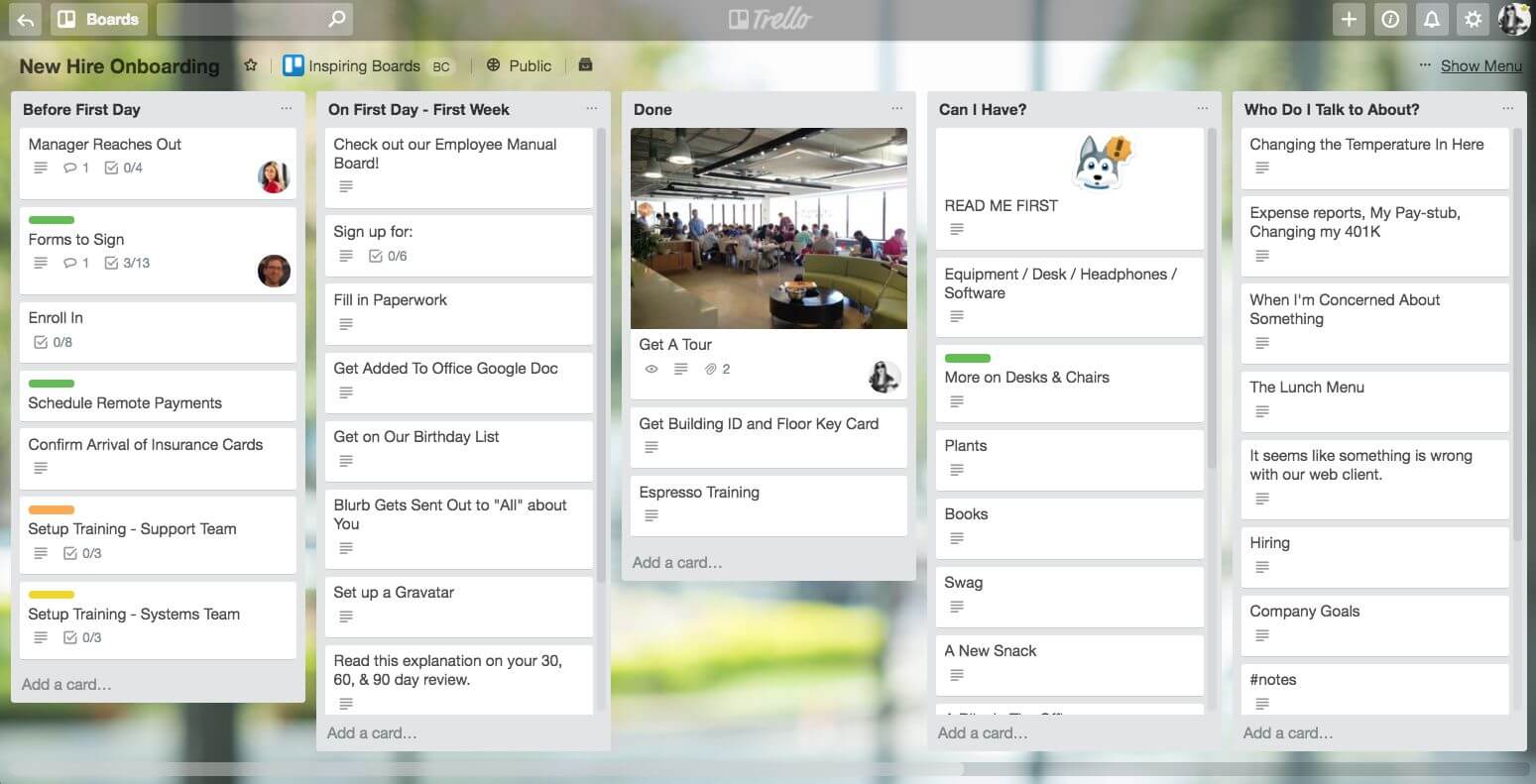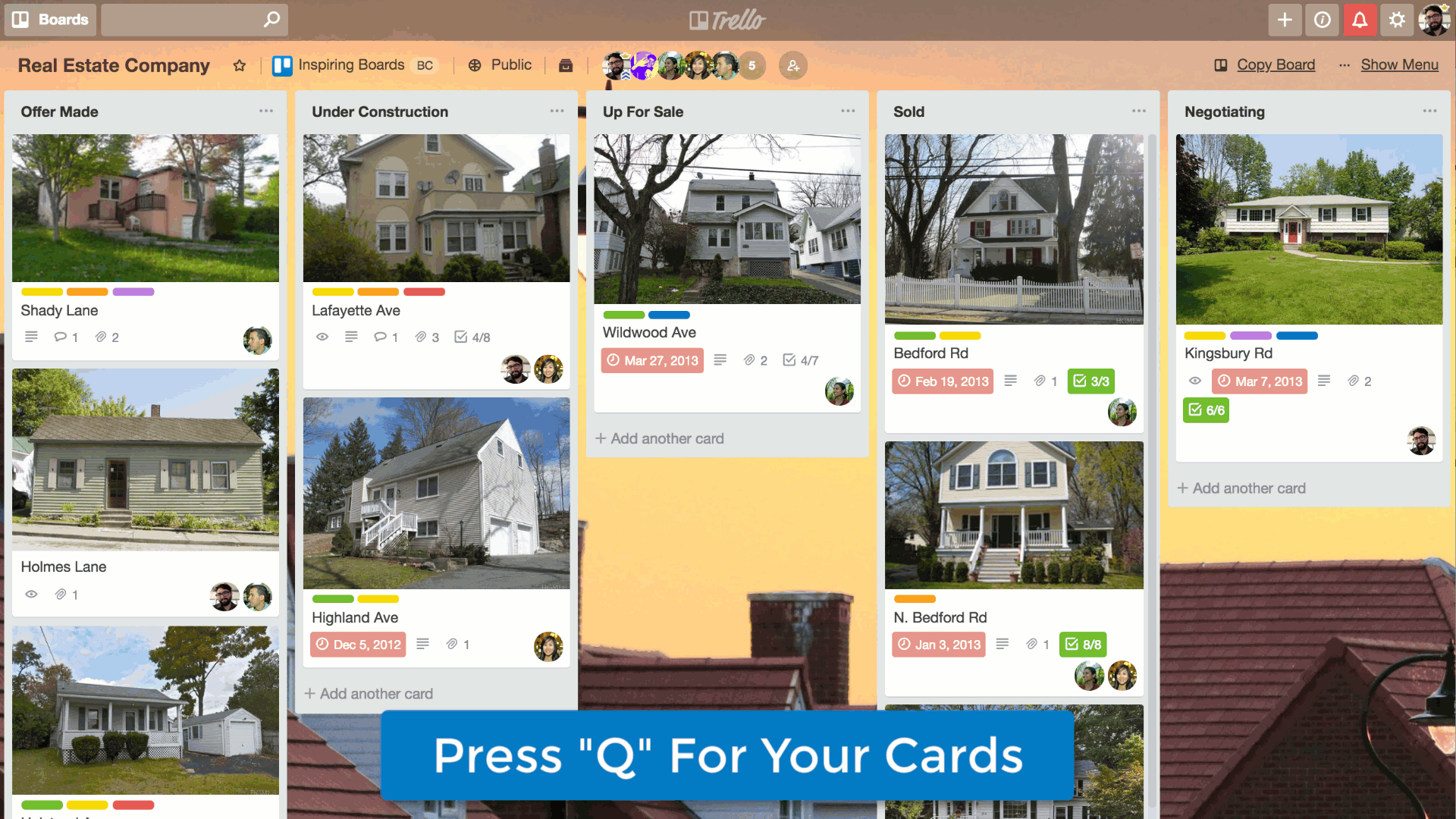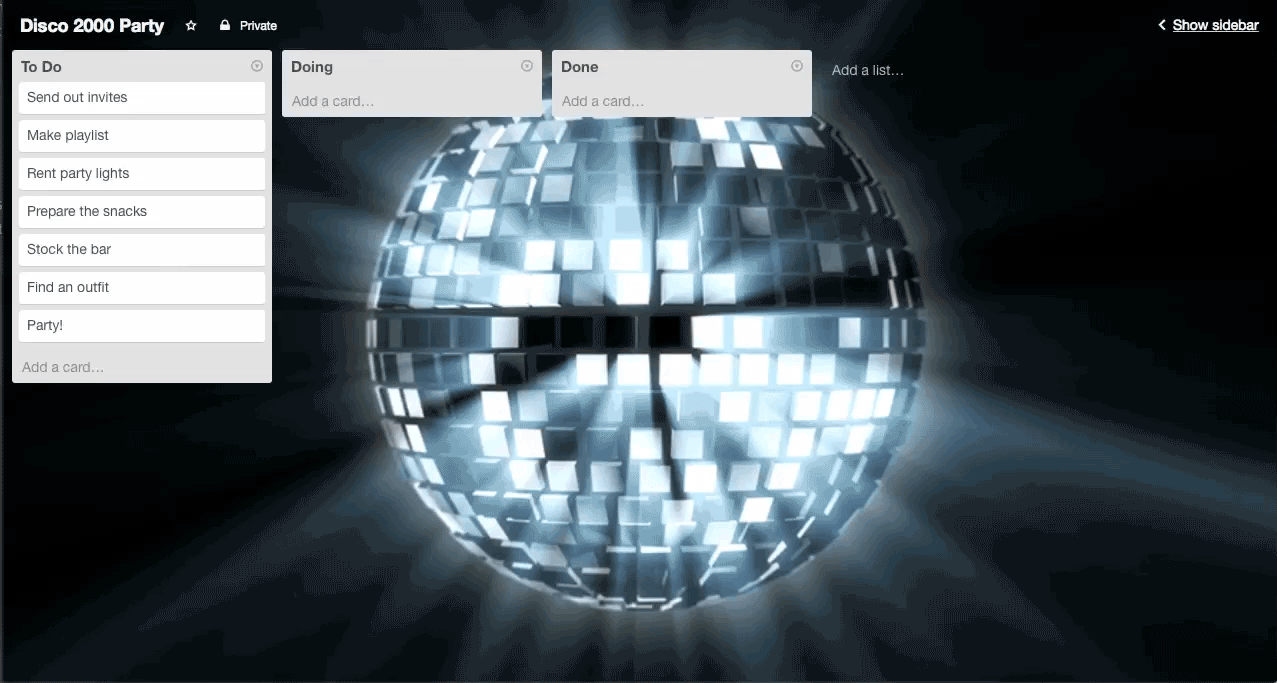This blog post is part of the Trello Day Replay series of talks given by members of the Trello team, Google, and Typeform about different ways they’re using Trello to be more effective in life and work. For more inspiration, check out the rest of the talks here.
What Is Trello?
That’s a big question with a very simple answer, because at its core Trello is really just boards, lists, and cards. That’s it. But it’s this simplicity that actually makes it infinitely powerful, because Trello is a completely flexible tool that can morph into any workflow you see fit.
By dragging cards, rearranging lists, adding attachments, enabling Power-Ups, renaming cards and lists, your boards evolve right alongside the changing needs of your project. So back to the question: What is Trello? Well, whether you’re using it to plan your wedding, help file your taxes, or do an agile sprint, the question is really: what isn’t Trello?
No matter your Trello skill level, undoubtedly there are some features you haven’t discovered yet. That’s the amazing thing about it: There’s no end to the flexibility and workflows. Let’s dive into a few popular boards and helpful tips:
Popular Trello Boards
There are an infinite amount of ways to set up your Trello board, but all of them can be boiled down to three frameworks: the left to right, the static, and the combo platter.
Here’s a few examples of each:
Holiday shopping

The Holiday Shopping board is a classic left to right flow. You start on the far left with a list of the people for whom you’re buying gifts. Once you have ideas, add them to their card and move it to the next list. Then their card eventually moves to “Purchased,” then “Delivered,” to finally “Wrapped.”
Pro tip: Enable the Package Tracker Power-Up so you can see exactly where any gifts you’ve ordered are in transit. All you need is the tracking number, and then a detailed breakdown will display on the card back.

The Package Tracker Power-Up is also quite handy in an office setting. An office manager keeping track of important packages, or an IT admin ordering new equipment could keep an eye on everything going in and out on one board.
Team Meetings

Another left to right flow is a team meeting board, which will keep the agenda smooth and the items discussed in an actionable format once it’s all over (because everyone hates when great ideas are talked about but nothing ever comes of them because there’s no record that they were discussed).
The magic happens in a list called “Team Meeting This Week,” where at any point during the week a team member can create a card in the list as an agenda item they’d like to discuss with the team. This is helpful because the teammate can make the card when they think of it during the week, and they won’t forget when the meeting comes around.
This structure also makes the meeting democratic: Anyone can make a card, thus feeling like everyone has a say. Also it prevents the inevitable of one person, usually a team lead, droning on while attendees are spacing out.
When time for the meeting rolls around, the team lead goes through each card in the “This Week” list, and after the team discusses, it is moved to a relevant list, whether it is “In Progress,” “Up Next,” or even “Done” if it was just a quick question. All the agenda items have thus been put into motion, and nothing gets lost.

Pro Tip: The Card Snooze Power-Up allows you to archive cards only to send them back at a time frame of your choosing. So let’s say during the meeting a card is discussed and it’s decided that this project won’t be happening until the next quarter, three months later. You can snooze the card until that time, and it will (magically!) reappear back on your board when it’s time to discuss.
Meal Planning

In contrast to the Holiday shopping board, this Meal Planning Trello board is an example of a static workflow. What that means is the cards don’t move from left to right, they stay housed in the same list all the time. We call these reference boards, as the cards in them are essentially repositories of information.
Here you can see that the lists are broken out into different categories of dishes: “Pasta,” “Seafood,” “Legumes,” etc. In addition to these categories, labels are being used to identify more specifics about each dish: Vegetarian, Gluten free, and so on.
Pro tip: Let’s say you are hosting a dinner party with vegetarians in attendance. Instead of combing through the board to find the card you want, use the filter feature to show only the cards marked with the label “Vegetarian.”

Filtering for labels can also be widely applicable in a business setting. For example, let’s say you have cards for different long term projects, and you mark each one with a label for the quarter during which they’ll be tackled. Then you’d be able to feature for only the current initiatives, and you can worry about longer term projects when it’s the appropriate time.
New Hire Onboarding
Getting new employees ramped up is a somewhat tedious, but extremely necessary process to bring new hires up to speed. This board is a combination of a left to right flow, as well as a static repository.

There are two lists on the left side of the board that are actionable: “To Complete First Week” and “Done.” The “To Complete…” list includes cards for all the usual new hire tasks: Getting set up with different accounts, access to tools, as well as payroll and tax forms that need to get sorted.
For new hires, starting a new job can be anxiety-inducing and overwhelming. Having a nice, neat Trello list with tasks to complete can be calming. Everything that is required of them is perfectly laid out for them to see, and dragging each card to “Done” can induce a sense of ease and accomplishment.
The subsequent lists are repositories of frequently asked questions, common employee resources and shared knowledge. There can even be a list with history about the company or fun facts, as well as a list with pictures and bios of some of the people with whom the new hire will be working closely.
The new hire onboarding board can become a useful hub for a new hire to reference anytime they feel stuck navigating a new company.

Pro tip: Enable the Google Drive Power-Up so you’re able to attach entire folders of forms to sign to a card back. The nice part about the Power-Up is it will display document names and previews right on the Trello card.
Trello Pro Tips And Shortcuts
There are lots of small but powerful features within Trello that can help you sort, view, and categorize only the information you need to see at any given time.
Press ‘Q’ To See Only Your Cards

Some of the bigger boards can get a little dizzying, as a bunch of cards might mean some tasks are easier to miss. There are a myriad of Trello keyboard shortcuts, but one of the most useful is the ‘Q’ key, which when pressed while on a Trello board will filter to show only cards to which you are assigned. Remember it by the saying, “Q is for you.”
Sort Cards In Lists

In the top right corner of every Trello card there is an ellipsis menu that’s easy to miss if you’re not hyper-aware. When you click it, you’ll see there are multiple options for different ways to sort the cards in a list: due date, when they were added, number of votes, or even by their Custom Fields data. This is very handy for lists that are starting to get long!
Show Or Hide Trello Card Back Details
On the Activity feed on a card back is where you would see comments, but there is also a lot of other information about a card’s journey: When it was moved, when the due date was changed, who was added, etc.

Sometimes this information can pile up, especially if a card has a long life span. There is, however, a little button below the comment box on the right side, called “Show/Hide Details.” Click it to show only the card comments back and forth if you need to follow the conversation only, or click it again to see when and who moved what to where. Very simple, yet powerful.
Create Individual Cards From A List Of Items

If you’re copying over a bunch of items from a list, let’s say importing them from a spreadsheet, Trello has a nifty way of recognizing that you might want to make a bunch of cards at once, as opposed to dumping all the list items onto one card. When it sees you are pasting an itemized list, a dialogue box pops up asking if you’d like to make one card, or make an individual card for each item. More magic! ✨
GIFs Work As Trello Board Backgrounds

There’s really nothing more to say about this. It’s just really important that you know this exists as an option.

